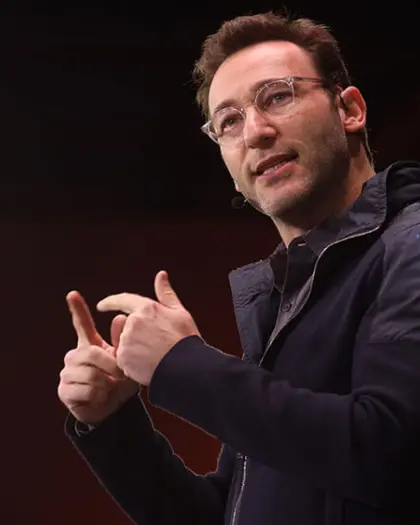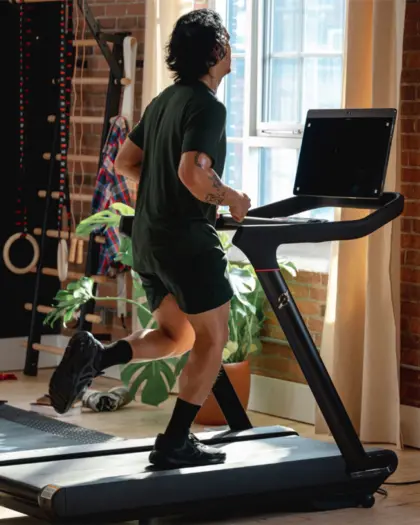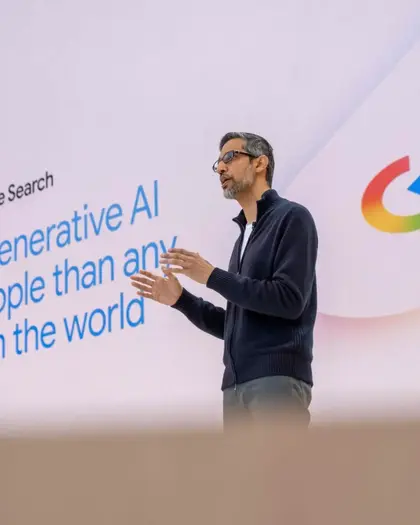I have witnessed countless beverage launches and rebrands in my years in marketing, but I find something uniquely fascinating about Heineken 0.0. When I look at the product’s newest “0.0 Reasons Needed” campaign, I see a perfect confluence of social insight, brand heritage, and a timely shift in consumer priorities.
Here is a brand that not only developed an excellent non-alcoholic beer - a product category historically sidelined as “niche” - but also turned it into one of the world’s best-selling NA (no-alcohol) beers. As I examine the data behind this campaign and contextualize it within the modern beverage marketplace, I notice several lessons for forward-thinking brands, particularly those operating in the fast-moving consumer goods (FMCG) space and direct-to-consumer (DTC) channels.
The marketplace is clearly ready for a broader embrace of alcohol-free options. I’ve tracked these trends emerging in multiple corners of the world, from North America to Europe, and now expanding into Asia. Industry-wide data suggests that non-alcoholic beer is becoming an integral part of social drinking culture, rather than a fringe alternative. In the third quarter of 2024 alone, Heineken 0.0 saw an 11% increase in global sales. In the UK specifically, the brand is the top-selling non-alcoholic beer, boasting a 25% increase in sales value to reach £38.4 million. Volume sales similarly jumped by 19.6%, hitting 44,504 hectoliters. These are not modest gains; they reflect a fundamental pivot in consumer preferences. And the UK is not the only market that’s thriving. In the U.S., Heineken 0.0’s nearly $80 million in annual sales is fueled by an 11.2% year-over-year dollar growth. With such momentum, Heineken 0.0 currently holds roughly 20% of the global non-alcoholic beer market, dwarfing its nearest rival with 167% greater sales.
So why has Heineken 0.0 soared ahead in a space that had long been overlooked? I attribute much of this success to the brand’s adept marketing strategy, which deftly marries cultural relevance with simple, resonant messaging. The new “0.0 Reasons Needed” campaign underscores a key shift in social norms: consumers no longer want to feel pressured to explain why they’re abstaining from alcohol. In my conversations with both marketers and consumers, I sense that the brand’s message is hitting upon an undercurrent of cultural tension. Historically, you were either the designated driver or someone on a diet, or you had some “serious” reason for not drinking. This campaign flips that entire assumption. It says, in effect, that people shouldn’t need to justify their choice to go alcohol-free. In an age where authenticity, mental and physical well-being, and personal agency rule the day, that’s a powerful stance.
The campaign leverages a series of short, entertaining ads (both on TV and across digital platforms) set in bars and social venues where characters drinking Heineken 0.0 are bombarded with questions and assumptions: “You must be driving,” or “Are you on a health kick?” In each scenario, the protagonist confidently chooses non-alcoholic beer simply because they feel like it, reinforcing the point that no reason is necessary. The brand relies heavily on a comedic approach, which helps diffuse the defensiveness or self-righteousness that can sometimes crop up when addressing alcohol-free or “healthy” choices. That light touch is essential. If the tone had been too preachy, it could have alienated the very people Heineken wants to welcome. By showcasing everyday scenarios tinged with humor, the brand offers up a mirror to the peer pressures many of us have experienced, while gently showing us a different way forward.
I’m also impressed by how this campaign fits seamlessly into Heineken’s broader brand architecture. The Heineken name carries substantial equity in taste, quality, and global recognition. When a household name introduces a NA version, consumers are more inclined to trust it, especially if it mimics the hallmark flavor profile. That’s crucial in this category: many consumers are not teetotalers but “repertoire drinkers” who occasionally switch between standard beer and NA beer, especially at social functions where they want the taste and ritual of drinking without the aftereffects. The brand also benefits from significant scale and resources; it can afford to back Heineken 0.0 with big-budget ad campaigns, international distribution, and pervasive sampling efforts. These tactics have undeniably helped put the product in countless hands, a vital element given that 40% of first-time triers go on to become repeat consumers.
More than any other demographic, though, the campaign directly targets Gen Z and millennials - many of whom identify as sober curious or mindful drinkers. Research from the University of Oxford, conducted in partnership with Heineken, revealed that over one-third of Gen Z feels pressure to drink alcohol in social settings, and about one-fifth have experienced teasing for choosing a low- or no-alcohol beverage. The same study reported that 51% of respondents ended up consuming alcohol when they originally planned not to, simply to avoid social judgment. Meanwhile, a full 20% of drinkers overall, across age groups, say they alternate between alcoholic and non-alcoholic drinks during the same event. These insights underscore how potent the cultural stigma can be - but also how open many consumers are to the idea of occasionally or permanently going booze-free.
In exploring these findings, I believe the heart of the campaign - “you don’t need a reason” - rings so true because it taps into universal experiences of peer pressure. It’s not just about health or weight loss or being a designated driver; it’s about personal autonomy and the freedom to make any choice without scrutiny. Since we see that Gen Zers are both the most vocal on social media and the most likely to be swayed by their peers, the brand’s emphasis on “it’s cool to be the guy or girl who doesn’t drink” is doubly effective. Heineken 0.0 positions itself as not just a functional product but a cultural signifier of self-confidence.
From a broader FMCG standpoint, I observe that non-alcoholic beverages have evolved dramatically in how they’re marketed. There used to be a misguided assumption that NA beers would only ever be a second-rate alternative, overshadowed by their alcoholic counterparts. Yet Heineken 0.0 proves that an NA brand can adopt the same marketing flair, premium cues, and aspirational storytelling as alcoholic brands do. It’s no longer about preaching restraint or guilt-tripping consumers. Instead, the brand invites them into the same dynamic occasions - bars, nightclubs, sports gatherings - where a typical beer might thrive, but shows them how this alternative can be just as fun, communal, and satisfying.
Looking at the direct-to-consumer (DTC) angles, I’ve noticed a strategic expansion into e-commerce channels. People want convenience, whether they’re stocking up for a party or sampling something new. By offering free shipping promotions or leveraging subscription models for monthly deliveries, Heineken can capitalize on the unstoppable rise of online beverage sales. DTC channels, combined with robust sampling in Q1 2024 (where the brand plans to distribute millions of samples), create a pipeline of consumer trial that’s much more immediate and trackable. In the modern era of marketing, bridging the gap between offline experiences (like events, sponsorships, in-store tastings) and digital engagement (social media, influencer partnerships, e-commerce) is key for a brand’s longevity.
Heineken 0.0 has further strengthened its credibility through high-profile sponsorships and ambassador partnerships. Whether it’s featuring a Formula 1 champion endorsing responsible drinking or infiltrating music festivals and sports arenas, the brand is omnipresent at moments of celebration. This resonates particularly well with younger consumers who might be going to these events in large groups, some of whom are trying to moderate their alcohol intake for physical or mental health reasons.
Naturally, we should also consider regulatory and economic factors. In the UK, post-Brexit adjustments to alcohol duty have effectively made lower-ABV products more cost-attractive, providing yet another tailwind for Heineken 0.0. The brand’s global expansion - entering established markets like the U.S. as well as rapidly developing ones such as China and Japan - means they’re benefiting from more universal conversations around health, wellness, and mindful consumption. It’s no exaggeration to say that the entire planet has grown more conscious about what goes into our bodies, especially post-pandemic, when self-care surged as a cultural priority.
With this campaign in particular, I find Heineken 0.0 is leveraging cultural humor and consumer psychology adeptly. The “awkwardness factor” around non-alcoholic beverages has plagued the category for decades. Drinkers have often been viewed with suspicion or forced to justify themselves. By presenting comedic scenarios where everyone around the protagonist leaps to an incorrect conclusion - dieting, driving, or having a big work deadline - the ads illustrate how ridiculous such assumptions truly are. Therein lies the genius: every viewer who’s ever avoided a drink, for any number of reasons, nods in recognition. The ads tackle an elephant in the room and humorously tell us: maybe it’s time to let people do what they want without prying.
Yet there’s a bigger existential question that many FMCG marketers are trying to solve: how do we reshape cultural norms so that non-alcoholic drinks feel as legitimate and “cool” as their boozy counterparts? Succeeding in that endeavor requires massive, concerted effort. Heineken 0.0’s approach blends long-standing brand equity, polished creative, robust budgets, and cross-platform marketing. The result is a wave of acceptance that has, quite literally, changed the NA beer conversation.
I think there’s still room for more. Some critics point out that plenty of marketing campaigns neglect to feature life’s big moments - weddings, birthdays, job promotions - where the default assumption is that you must celebrate with alcohol. If a brand like Heineken were to more explicitly depict NA beer as a legitimate celebratory option at major milestones, that might move the cultural needle even further. In fact, a relevant future approach might be a campaign illustrating a wedding toast where the bride lifts a Heineken 0.0, or a group of friends at a holiday party mixing NA and alcoholic beverages with total fluidity. Such imagery would show that non-drinkers can stay fully immersed in life’s jubilant occasions.
Stepping back, I also marvel at the Heineken's capacity to break taboos while maintaining a tone that is lively rather than moralistic. This has always been Heineken’s strong suit: being top-of-mind for “good times” while also championing responsible choices. In my discussions with younger consumers, I find that they crave authenticity and transparency, and are quick to see through token gestures. Hence, the brand’s direct, approachable “0.0 Reasons Needed” message resonates. It says, “We get you, we see you, and we don’t think you need to provide a laundry list of explanations. Enjoy your night - no strings attached.”
In addition, the brand’s approach fosters loyalty among a rapidly growing segment of mindful drinkers. Once you remove the stigma around not drinking, you open the floodgates for deeper brand engagement. The brand’s understanding that 20% of drinkers regularly switch between alcoholic and non-alcoholic options is vital. It doesn’t force an either/or proposition. Instead, it allows for more fluid, flexible engagement with the product, which is precisely how many modern consumers behave: they want it all, and they want the freedom to choose from moment to moment.
I often speak of how marketing’s ultimate goal is to mirror and influence cultural behavior in a way that adds value to the consumer’s life. By positioning 0.0 as an integral, vibrant part of social occasions, Heineken is setting a strong benchmark for the industry. The brand demonstrates how to wield humor, authenticity, and timely awareness of shifting consumer tastes to drive both sales and cultural conversation.




















